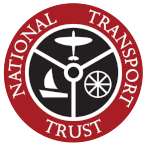Successful reopening of pioneering railway after 24 years
[photo: Dave Enefer]
Sunday 3 May saw the reopening of the Lincolnshire Coast Light Railway after a gap of 24 years.
At a ceremony witnessed by Butlins mascot Billy and attendant Redcoats, the Mayor and Mayoress of Skegness saw off the reopening train, seen running through woods adjacent to Skegness Airfield. The 60 cm (1’11”) gauge line has a unique and historically important collection of early English narrow gauge railway carriages and wagons, diesel locomotives and one steam locomotive.
The railway has origins in the network of narrow gauge railways which served Lincolnshire’s potato growing industry. Track and rolling stock came from the trench railways built by the British military in the First World War to take troops and munitions to the front lines. When the agricultural traffic moved to road a group of railway enthusiasts built the LCLR to preserve some of the equipment and operate it as a passenger carrying line. Services ran in the '60s and 70's at the initial site south of Cleethorpes but with falling patronage this closed in 1985. In search of a more secure base the focus was transferred to Skegness and construction there has progressed since 1995.
The site hosts an important collection of WW1 trench railway vehicles owned and restored by the LCLR Historic Vehicles Trust. Two large bogie carriages built by the Gloucester RC and W Company in 1924 for the Ashover Light Railway have been restored for passenger service, while the only passenger carriage ever owned and operated by the Sand Hutton Light Railway on its line near York, is undergoing renovation after use as a sports pavilion. The importance of the collection has been recognised by the Science Museum and the Transport Trust who have contributed to the cost of restoration.
For more information visit: Lincolnshire Coast Light Railway web site

